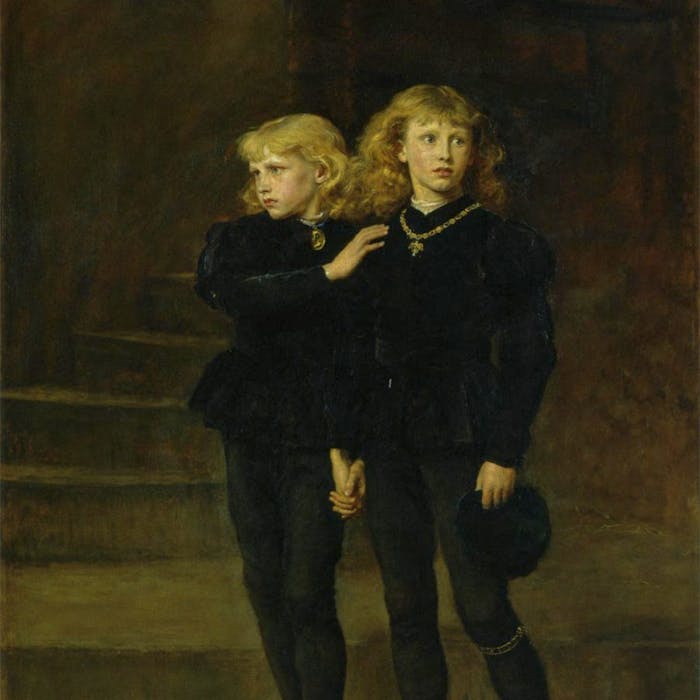
The Princes in the Tower - victims of royal ambition
You've probably heard the story of the Princes in the Tower, two little boys who were imprisoned in the Tower of London at the end of the 15th century, and then vanished. But why were they imprisoned, and who were they? Perhaps predictably, they were victims of a royal power struggle.
The eldest of the boys was actually a short-lived king of England. He was King Edward V, the eldest son of the previous king, Edward IV, and his wife, Elizabeth Woodville. He was 12 when his father suddenly died in 1483, and his brother Richard was nine.
The new king's closest adult male relative on his father's side was his uncle, Richard, Duke of Gloucester. Richard had been loyal to Edward IV throughout the reign, and hoped to be king himself.
As the new young King Edward left his castle at Ludlow and headed with his retinue towards London, Gloucester raced down from Yorkshire to intercept him and escort him the rest of the way to the Tower, which was the usual place for kings to prepare for their coronation. However, Richard had malicious intent, and executed several of the young king's escort, including his maternal uncle and half-brother.
The widowed queen took refuge from the danger in Westminster Abbey with the rest of her children, including her younger son, Richard, Duke of York. But after a few weeks she was persuaded to hand over her son to him too, and he joined his brother in the Tower.
Once he had secured both heirs to the throne, the date of Edward's coronation was indefinitely postponed by their scheming uncle. He had his stooges declare that the princes were illegitimate and took the throne himself as Richard III.
The two boys were for a while seen in the Tower grounds or at windows, but this became less and less, until finally never seen again. Contemporaries, including their mother, seemed to assume that they had been murdered upon Richard's orders - though some "pretenders" appeared during the reign of Henry VII.
In 1674, workmen remodelling the Tower of London dug up a wooden box containing two small human skeletons. They were later interred in Westminster Abbey on the instructions of Charles II. It is not known if these were the bones of the lost princes, and DNA testing has not been permitted.
The painting of the princes is by Sir John Everett Millais.
Further reading
Links to external websites are not maintained by Bite Sized Britain. They are provided to give users access to additional information. Bite Sized Britain is not responsible for the content of these external websites.
